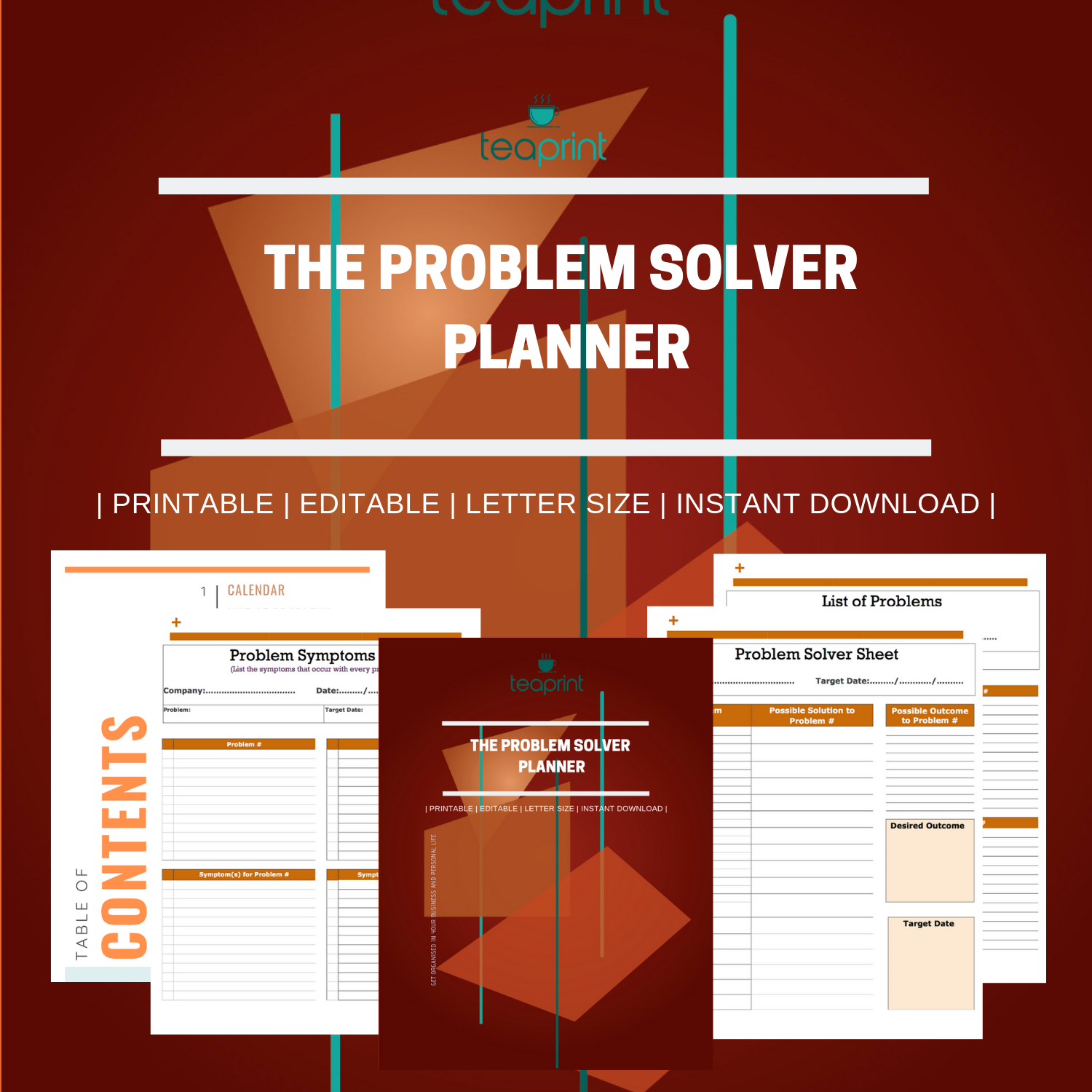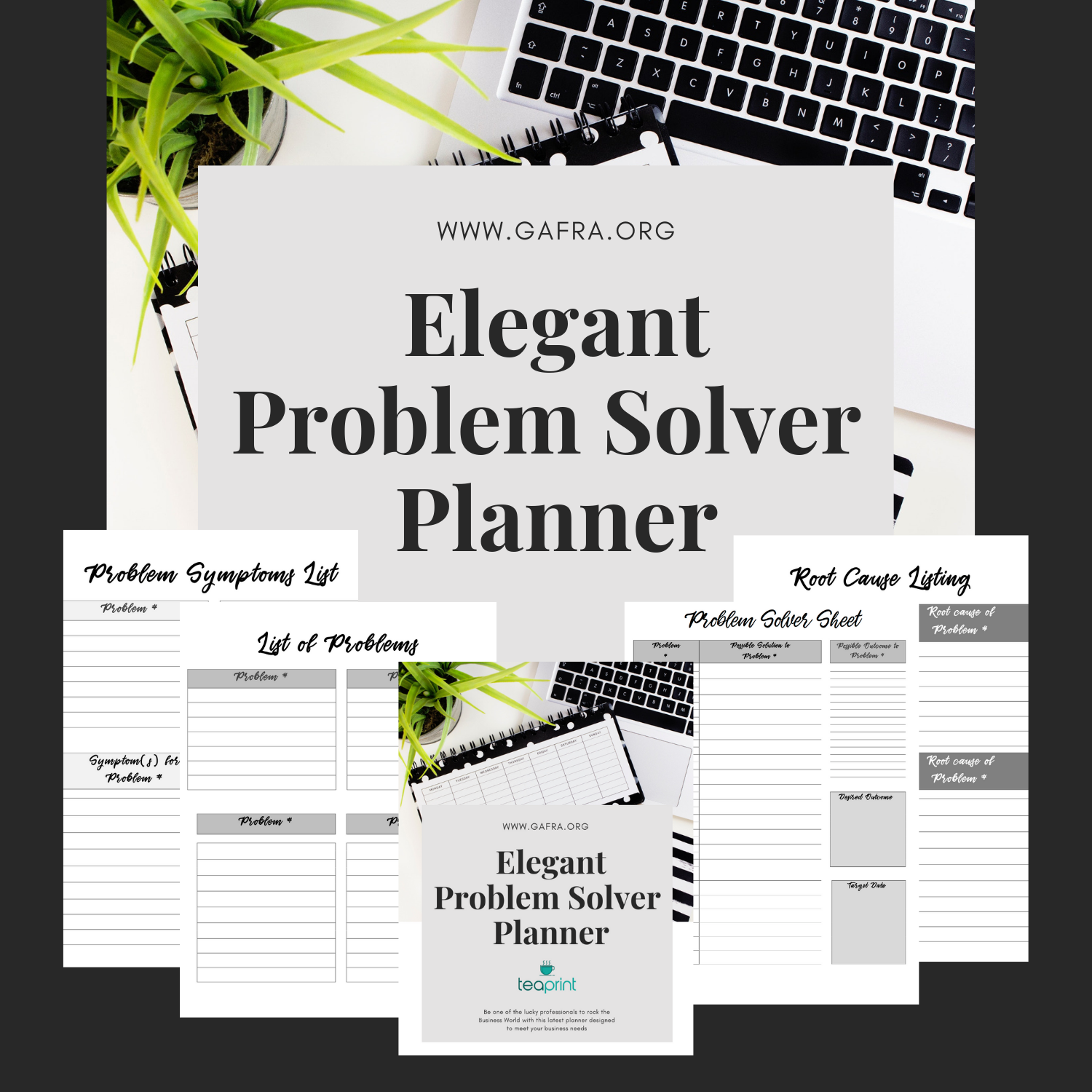How to Solve Problems: An Easy method
Hi everyone…as you see so far I’ve started on a series dealing with how to do different things via some easy methods, such as Plan, solve problems, delegate, coach, manage your time and manage/organise your life.
The last post dealt with how to plan using an easy method, today I’m looking at how you can have a simple process to be able to solve any personal or business problem. These are some of the things I deal with on a daily basis with my clients…….for those of you who are new to my blog, I am a Leadership coach here in Trinidad as well as an Artist, Blogger and mother of 4 millenials. I plan to do a blog post on Millennials soon as they are quite interesting and living with 4 kids with different personalities was an experience. Their ages range from 28 to 24.
My blog is a lifestyle blog, it’s my outlet to discuss/talk about anything and everything I see as interesting and which touches me. I am also an artist so my Art blog is www.gafra.org or www.gafra-art.com. If you want to view my work check out my Art site. Today I’m dealing with problem solving, so lets get started.
Problem Solving
Definition: the process of finding solutions to difficult or complex issues.
People face problems every day—usually, multiple problems throughout the day. Sometimes these problems are straightforward: To decide what to cook with thw ingredients you have. Sometimes, however, the problems we encounter are more complex.
For example, say you have a work deadline, and you must mail a printed copy of a report to your supervisor by the end of the business day. The report is time-sensitive and must be sent overnight. You finished the report last night, but your printer will not work today. What should you do? First, you need to identify the problem and then apply a strategy for solving the problem.
GET YOUR PRINTABLE PLANNER HERE
Problem-solving strategies
When you are presented with a problem—whether it is a complex problem or a problem as simple as a printer whose toner has run out, how do you solve it? Before finding a solution to the problem, the problem must first be clearly identified. After that, one of many problem solving strategies can be applied, hopefully resulting in a solution.
They say that the steps to take to solve a problem are - define, measure, analyze, improve and control. The first two steps define and measure the problem. The third step is the analysis. And the fourth and fifth steps, improve and control, are about solutions.
After that, one of many problem solving strategies devised can be applied, hopefully resulting in a solution. So basically a problem-solving strategy is a plan of action used to find a solution. Different strategies have different action plans associated with them. For example, a well-known strategy is trial and error another is working backwards.
Examples: Working Backwards: in which you begin solving the problem by focusing on the end result. Consider this example: You live in Washington, D.C. and have been invited to a wedding at 4 PM on Saturday in Philadelphia. Knowing that Interstate 95 tends to back up any day of the week, you need to plan your route and time your departure accordingly. If you want to be at the wedding service by 3:30 PM, and it takes 2.5 hours to get to Philadelphia without traffic, what time should you leave your house?
You use the working backwards heuristic to plan the events of your day on a regular basis, probably without even thinking about it. This is my main method if I know I going somewhere for a certain time. I hate being late and this backwards method works beautifully for me, in fact, I tend to add a few more minutes as a contingency, you never know what can happen on the way.
Trial and Error: In terms of your printer without toner, you could try checking the ink levels, and if that doesn’t work, you could check to make sure you don’t have another toner stashed somewhere. Or maybe the printer is actually broken. When using trial and error, you continue to try different solutions until you solved your problem. Although trial and error is not typically one of the most time-efficient strategies, it is a commonly used one.
This is a strategy most people use and yes it can take time until you pick or find the right solution but problem solving is normally needed in the blink of an eye so who can say if a method took too long or not, it will always take some time to solve any problem.
Creative problem solving (CPS): is a method of problem solving in which you approach a problem or challenge in an imaginative, innovative way. The goal of CPS is to come up with innovative solutions, make a decision, and take action quickly.
The Basic Steps to Problem Solving
The Six Steps
Define the Problem.
Determine the Root Cause(s) of the Problem.
Develop Alternative Solutions.
Select a Solution.
Implement the Solution.
Evaluate the Outcome.
Steps to Solving Problems in a Business environment
Dealing with a Difficult Problem
Always try to solve a problem informally first. ...
Focus on the problem, not the person. ...
Be assertive, but be courteous. ...
Focus on the immediate problem. ...
Prepare for your meeting. ...
If you are uncomfortable meeting alone, invite a third party to join you. ...
Put yourself in the other person's shoes.
Problem-Solving: Your Next Steps and Skills
Now that you've brainstormed a list of potential problems, your next step is to think up effective solutions for these issues, noting the skills you will need to resolve them.
VISIST MY ETSY SHOP FOR YOUR PRINTABLE PROBLEM SOLVER PLANNER HERE
From A Business Perspective
Once you’ve determined what is causing a problem, it’s time to come up with possible alternative solutions. Sometimes this involves teamwork, since two (or more) minds are often better than one. It’s rare that a single strategy is the obvious route to solving a complex problem; devising a set of alternatives helps you to cover your bases and reduce your risk exposure should the first strategy you implement fail.
Evaluating the best solutions
Depending upon the nature of the problem and your chain of command, evaluating the best solutions may be performed by assigned teams, team leads, or forwarded upward to major corporate decision makers. Whoever makes the decision must evaluate potential costs, required resources, and possible barriers to successful solution implementation.
Implementing a plan
Once a course of action has been decided upon, it must be implemented, along with benchmarks that can quickly and accurately determine whether it’s working to solve a problem. Plan implementation also typically involves alerting personnel to changes in their standard operating procedures
Assessing the effectiveness of your interventions
Once a solution is implemented, the best problem-solvers have systems in place to ascertain if and how quickly it’s working. This way, they know as soon as possible whether the issue has been resolved or, alternatively, whether they’ll have to change their response to the problem mid-stream.
Summary
You now have the process to follow to solve a problem, but there is an even easier way. I created a planner to help you, do all the steps above thereby making the process much easier. You get the forms to answer all the relevant questions and the planner forms follow the process to problem solving.
These are the forms available in the Printable Problem Solver planner:
Calendar
List of Problem Page
Problem Symptoms Page
Root Cause Listing Page
Additional Information Collection Page
Problem Solver Page (list all possible solutions)
Problem Solver Tracker Page (Track which solution worked for future use)
Problem Solver Summary Page
Meeting Agenda Page (for all meetings required with the team or any relevant individual(s))
Meeting Planner
Things to Remember Page
Daily Goal Planning Page (set the goals for the different tasks needed to solve the problem)
Weekly Goal Planning Page
Monthly Goal Planning Page
Notes Pages
I created 2 styles for this planner, for those who are minimalist, there is the Elegant Problem Solver Printable Planner and for those who like a bit of colour, there is the Red Problem Solver Printable Planner. Make life easier don’t reinvent the wheel, simply print theses pages and get to work. They are easily available HERE.
GET YOUR PROBLEM SOLVER PRINTABLE PLANNERS HERE
I hope I’ve helped you make solving problems much easier, I tried to take away the frustration of deciding where to start and what to do first, like I said simply follow the flow of the forms and WALLA!!!!
I’LL SEE YOU GUYS LATER, LUV YOU ALL.
Referrals
IPSY102 – COURSE.CERU.ORG
The Balance Careers




